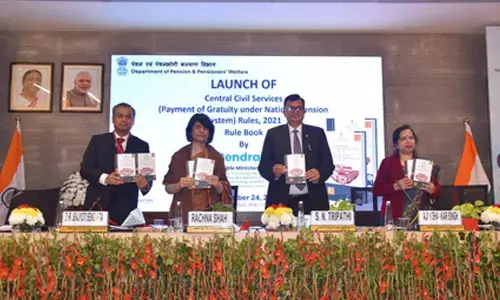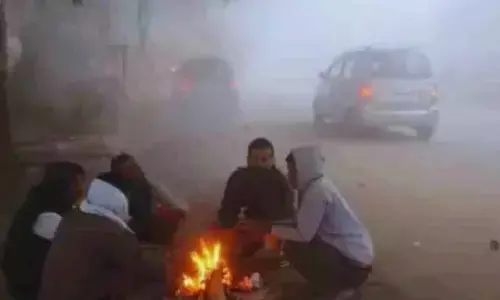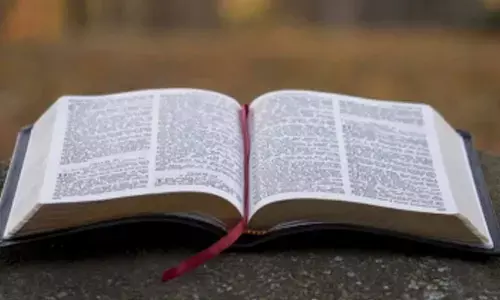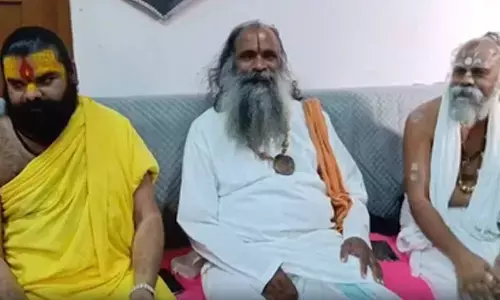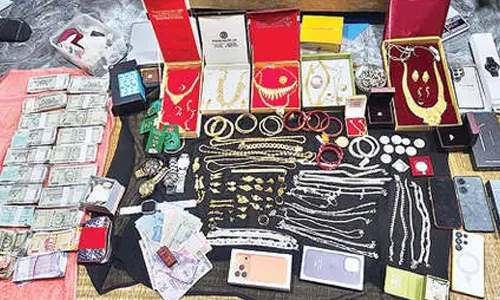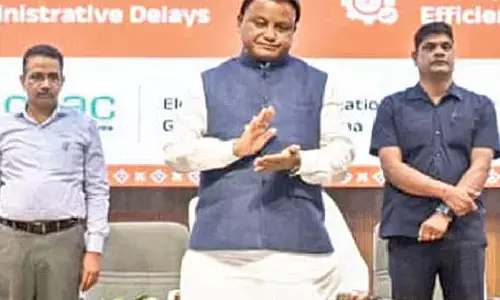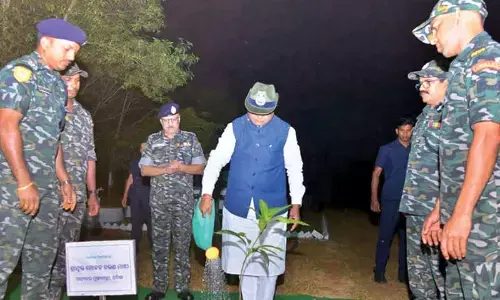Telangana Formation Day -A Nostalgic Trip Down Memory Lane

Telangana Formation Day -A Nostalgic Trip Down Memory Lane
Telangana as a geographical and political entity was born on June 2, 2014 as the 29th,and the youngest state in Union of India.
Telangana as a geographical and political entity was born on June 2, 2014 as the 29th,and the youngest state in Union of India. However, as an economic, social, cultural and historical entity it has a glorious past and history of at least 2500 years or more. The state celebrates the Telangana Formation Day with grandeur and aplomb and conducts various events and cultural activities. The state wears a festive look as government offices and important land marks and monuments are being illuminated with dazzling lights and the people of the state are in a festive mood. The days signify the saga of Telangana movement history through the years for a separate state. Homage and rich tributes are being paid to martyrs who sacrificed their lives in the separate statehood movement.
My reminiscence goes back to more than five decades and travels through the lanes and by lanes of my memory slowly and steadily, and one page after the other was getting opened in front of my eyes as if it had happened just yesterday. I was one of the witnesses and participants in the great Telangana movement of late 60’s along with many other unsung heroes in the annals of history.
The proponents of a separate Telangana state felt that non implementation of gentleman’s agreement and continued discrimination to Telangana region in government jobs and education and public spending and assurances from the legislature and Lok Sabha over the last fifty years had not been honoured and as a consequence Telangana had remained neglected, exploited and backward. This resulted in the 1969 separate statehood agitation. In January 1969, students intensified the protests for a separate state. The first person to raise the issue of Telangana happened in 1968 during October-November time frame. A hunger strike was being carried on by a person named Ravindranath on January, 8, 1969 in Khammam near the railway station. He was on an indefinite fast and his prime demand was to implement Telangana safeguards. The other demand was his insistence on implementation of gentleman’s agreement. It was a major event in the Telangana movement.
Discontent intensified when the guarantees that had been agreed on were supposed to lapse. Mulki rules, that promised jobs and admission into professional courses for local people, were scrapped. Seniority criteria of both the regions in government offices was merged, with the result promotions for Telangana region almost became nil. By January 23 protests turned violent. The police opened indiscriminate firing and 369 Telangana students lost their lives. Army was called in to maintain law and order and to conduct state board exams as planned. Protests and sloganeering intensified and defectors from congress, led by Dr. M Chenna Reddy founded the Telangana Praja Samiti, a new political party, later they contested elections on this name and won Lok Sabha seats, though later they merged with congress leaving the movement in a lurch. Telangana employee’s union started strike supporting the movement. Major leaders of the movement were jailed. Dr. Mallikarjun, the student leader, who later became a union minister at the center and handled many portfolios, was arrested. That was the time when many students, mostly girls, joined the movement and participated in peaceful protests in the form of relay hunger strikes. The Telangana leaders rejected an eight-point plan offered by Indira Gandhi, the then Prime Minister of India. Protests continued under the newly formed political party.
On June 11th, 1969, women entered the agitation along with political leaders like Sangam Lakshmi Bai M P, Eshwari Bai M L A, and former minister Smt. Sada Lakshmi and others. Young college girls were approached almost every day by these middle-aged women leaders to join the movement.
As, the agitation intensified the educational institutes remained partially closed to discourage the students from coming out of their homes and with no source of communication it was next to impossible to involve girls in the movement. But the sparks of desire for a separate state did not die down and methods and ways were found out to keep in touch with each other and keep the movement alive. The women leaders approached us outside the gates of our colleges. Every day they spoke to us. They made us understand the importance and glory of Telangana for the past 2500 years.
Telangana has been a vibrant social entity by the time of Buddha and continued to be so for the next two and a half Millenia. One of the five disciples of Lord Buddha, Kondanna, is a typical name from Telangana and though there is no exact information about his native place, the earliest known Buddhist township Kondapur in Ranga Reddy district is believed to be after him. The Buddha himself famously acknowledged that it was Kondanna who understood him properly. Megasthenes, an ancient Greek explorer, diplomat and historian, who visited India in 4th century B.C.E, wrote that there were 30 fortified townsin Andhra region and majority of them were in Telangana. In the historical age Telangana had given rise to mighty empires and kingdoms like,the Satavahana, the Ikshvaka, the Chalukya, the Kakatiya, the QutabShahi and the Asif -Jahi.Despite attempts by historians and scholars from Andhra region to obfuscate and erase its history Telangana always fought for its self-respect and self- rule.
The women leaders took us back to early 50’s and highlighted how people of Telangana at that time organized themselves with a demand for a separate state in 1953. State Reorganising Commission (S.R.C), appointed by the Indian Government toured the region. The people of Telangana region submitted several memoranda to S.R.C and expressed their wish to constitute Telangana as a separate state. Telangana intellectuals such as late Professor Jaya Shankar (Agriculture University at Rajendranagar, Hyderabad, named after him after bifurcation) and political leaders such as Harish ChandraHeda, Sri Konda Venkata Ranga Reddy gave memorandum containing historic, political, economic, social and cultural justifications for creating Telangana State. All their pleas and requests fell on deaf ears. Intense lobbying resulted in the merger of the two regions to form AP State. Telangana leaders insisted on agentleman’s agreement and was signed safe guarding the discrimination against Telangana but the agreement from day one was violated by Andhra leaders.
The women leaders felt that it was important to educate young girls about the grand history and culture and previous Telangana struggle before they joined the movement. A lot of ground work was done before the girls joined the movement voluntarily. Parents were approached, requested and were assured of the safety of their daughters. Efforts and pains were taken to see that each girl reached home safe and sound at the end of the day. Hunger strike tents were erected in front of the college gates, it was seen that there were at least 3 to 4 girls sitting in the tent at a time and were relieved after 48 hours. Juice was brought from homes (those days soft drinks and juice in small cartons was not heard of) hiding it from the authorities to offer to the girls when they broke their fast. Sometimes after being detected the juice was spilled over, on the roads. Efforts were made again to get it through another route. A night-long vigilance in batches, near and around the hunger strike tents of girls was carried out by young boys of the movement. Not a single untoward incident at any time was reported during the entire agitation period. Many girls helped in carrying messages from one tent to another, one street to another, which was quite a distance, without being suspected as the movement of boys was under strict observation and they were questioned at every step. Girls and women from the city and in districts actively participated and showed their ‘women power’. Without their involvement the protests would have been ineffective as most men and leaders were arrested.
June 17th, 1969 was observed as Telangana Women’s Day by T.P.S. Every possible attempt was made to kill the movement or dissuade girls from participating and all possible efforts were made to continue the movement as long as possible by every individual. Students were ready to lose one year and they lost too but the agitation died down due to lack of political will and determination among the so-called leaders. They joined hands with the leaders at the Centre for their own political gains and the movement died a slow death. The ‘Jai Telangana’ slogan that reverberated then was revived again by KCR, the leader with a strong will and determination. The aspirations of the people of Telangana were fulfilled by this leader through his sheer determination, perseverance and political acumen. The agitation was one of the longest movements in South India that lasted for more than 5 decades. Telangana rose again and secured its political identity and is in the process of resurrecting its own glorious past, known for its Ganga Jamuna Tehzeeb.









